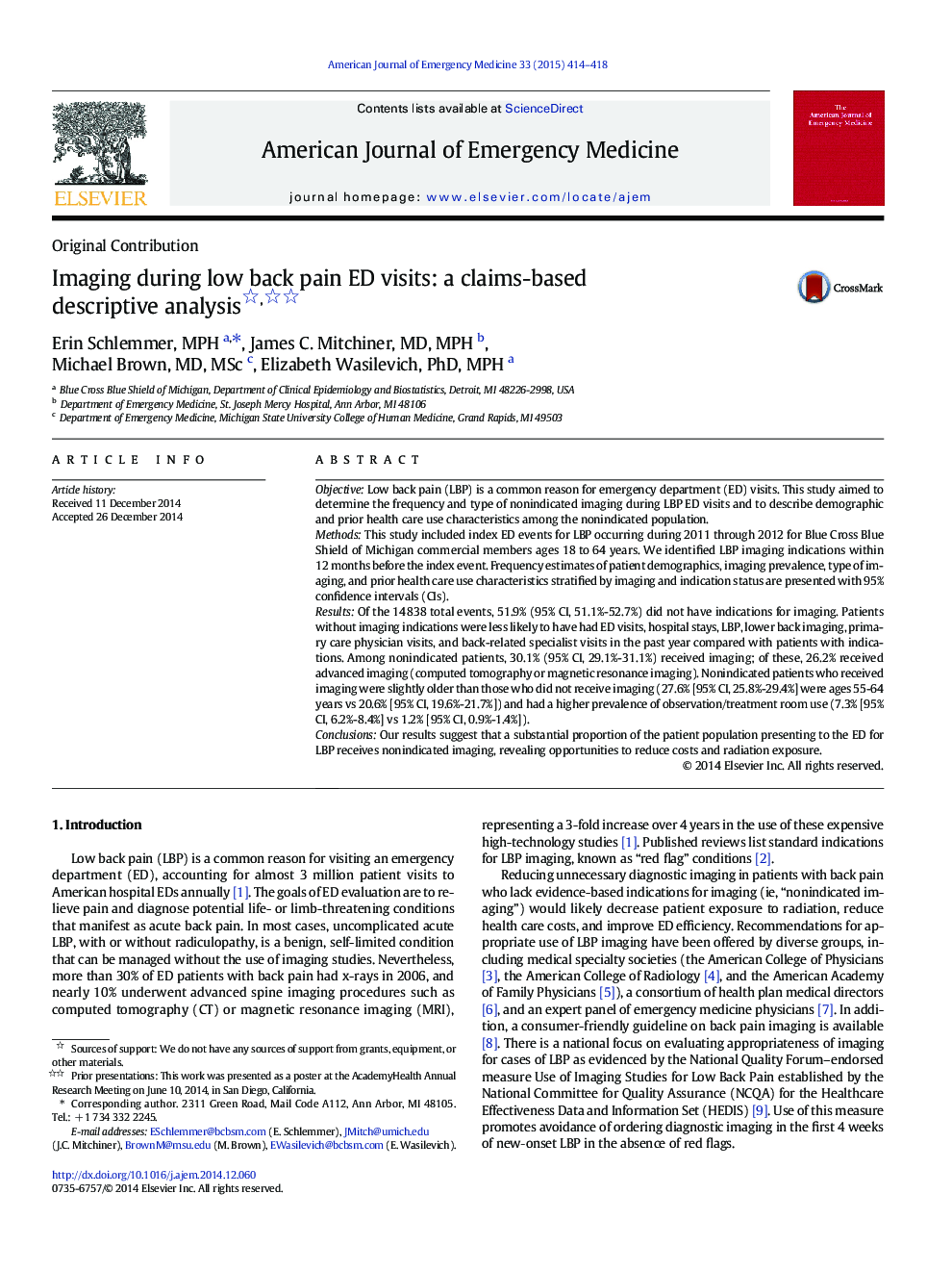| Article ID | Journal | Published Year | Pages | File Type |
|---|---|---|---|---|
| 3224776 | The American Journal of Emergency Medicine | 2015 | 5 Pages |
ObjectiveLow back pain (LBP) is a common reason for emergency department (ED) visits. This study aimed to determine the frequency and type of nonindicated imaging during LBP ED visits and to describe demographic and prior health care use characteristics among the nonindicated population.MethodsThis study included index ED events for LBP occurring during 2011 through 2012 for Blue Cross Blue Shield of Michigan commercial members ages 18 to 64 years. We identified LBP imaging indications within 12 months before the index event. Frequency estimates of patient demographics, imaging prevalence, type of imaging, and prior health care use characteristics stratified by imaging and indication status are presented with 95% confidence intervals (CIs).ResultsOf the 14 838 total events, 51.9% (95% CI, 51.1%-52.7%) did not have indications for imaging. Patients without imaging indications were less likely to have had ED visits, hospital stays, LBP, lower back imaging, primary care physician visits, and back-related specialist visits in the past year compared with patients with indications. Among nonindicated patients, 30.1% (95% CI, 29.1%-31.1%) received imaging; of these, 26.2% received advanced imaging (computed tomography or magnetic resonance imaging). Nonindicated patients who received imaging were slightly older than those who did not receive imaging (27.6% [95% CI, 25.8%-29.4%] were ages 55-64 years vs 20.6% [95% CI, 19.6%-21.7%]) and had a higher prevalence of observation/treatment room use (7.3% [95% CI, 6.2%-8.4%] vs 1.2% [95% CI, 0.9%-1.4%]).ConclusionsOur results suggest that a substantial proportion of the patient population presenting to the ED for LBP receives nonindicated imaging, revealing opportunities to reduce costs and radiation exposure.
